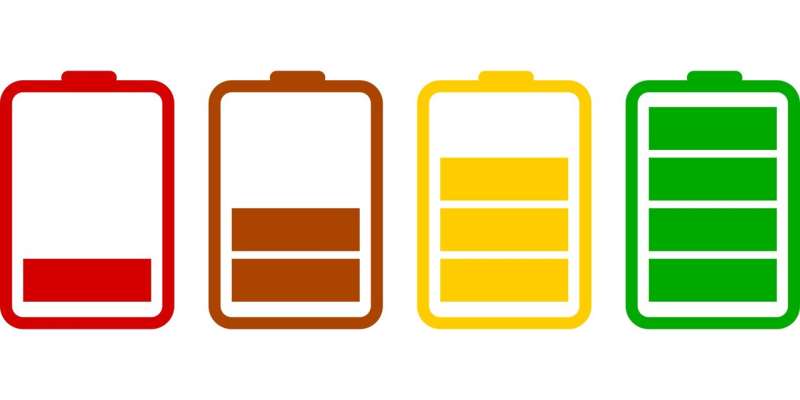Credit: CC0 Public Domain
Batteries are in increasing demand because of their use in electric vehicles, consumer electronics, and grid scale storage. Their ubiquity is due, in part, to the rapid shift toward producing and using clean energy to replace fossil fuels. But how clean are they? Recyclability is a key component of how "dirty" a technology is, from manufacture to use to disposal. Particularly as demand and usage increases, battery recyclability and environmental impact will become even greater issues.
A new body of scholarship, funded by the USAID program through the U.S. National Academies and led by Nikhil Gupta, New York University professor of mechanical and aerospace and civil and urban engineering, and a member of the NYU Center for Cybersecurity, focuses on the need to adopt a circular economy (or zero waste) paradigm for the dominant batteries—lithium ion (Li‐ion) and lead acid (LA).
The study, "Recycling of Li-Ion and Lead Acid Batteries, a Review," which appears in The Journal of the Indian Institute of Science, delves into the batteries' construction and materials, components of production and recycling, multinational recycling loop for spent batteries, and more. The team includes principal author Kaushik Yanamandra, a Ph.D. student in Gupta's lab; Dinesh Pinisetty of California State University; and Atef Daoud of the Central Metallurgical Research and Development Institute, in Cairo, Egypt.
In the study, the investigators report that while Li-ion batteries have higher energy density and longer cycle life, fewer than 1% of them are recyclable, and the processes for recovering Li for reuse in battery applications are still inefficient. By contrast, LA batteries are now recycled with more than 99% efficiency in the U.S. and E.U. because of factors such as separation at the source, availability of methods to economically recover materials, and regulations supporting recycling. The paper highlights novel recycling techniques being developed for the effective recycling of Li‐ion batteries.
"Lead acid batteries have been around for a long time, so recycling has greatly evolved," noted Gupta. "In fact when one buys a new car battery, the old one must be returned for recycling— it's a requirement. Because the architecture of LA batteries has not changed substantially over the years, recyclers know how to do it quickly and efficiently."
Coauthor Pinisetty added that "Li-ion batteries will continue to gain market share due to their significantly superior performance. However, the rapidly evolving chemistry and cell design of Li-ion batteries pose major challenges for the recycling industry. Once the battery chemistry is standardized, it will become easier to develop effective recycling technologies."
Meanwhile, the authors point out that the market size of LA batteries is still growing due to their demand in automotive and grid scale storage applications. They note that:
- The total battery market size was estimated to be US $108.4 billion in 2019 and it is expected to grow by 14.1% from 2020 to 2027
- LA batteries account for 29% of the market share, estimated to be about $59 billion in 2018
- Although the use of Li-ion batteries is rapidly increasing, especially in electrical vehicles and electronic devices, the overall growth of the energy storage device sector is sustaining the LA battery market in terms of volume.
More information: Kaushik Yanamandra et al, Recycling of Li-Ion and Lead Acid Batteries: A Review, Journal of the Indian Institute of Science (2022). DOI: 10.1007/s41745-021-00269-7
Provided by NYU Tandon School of Engineering
























